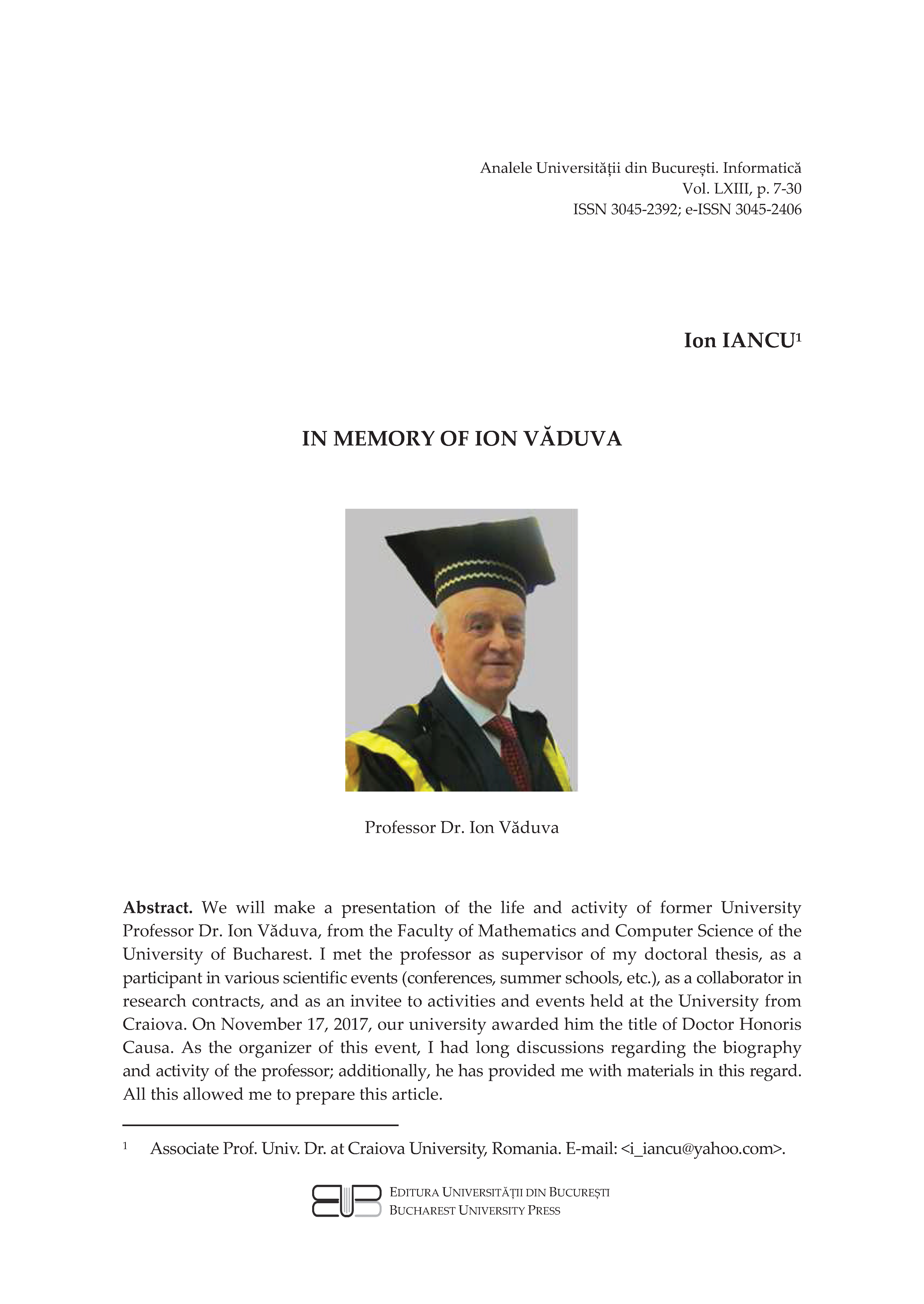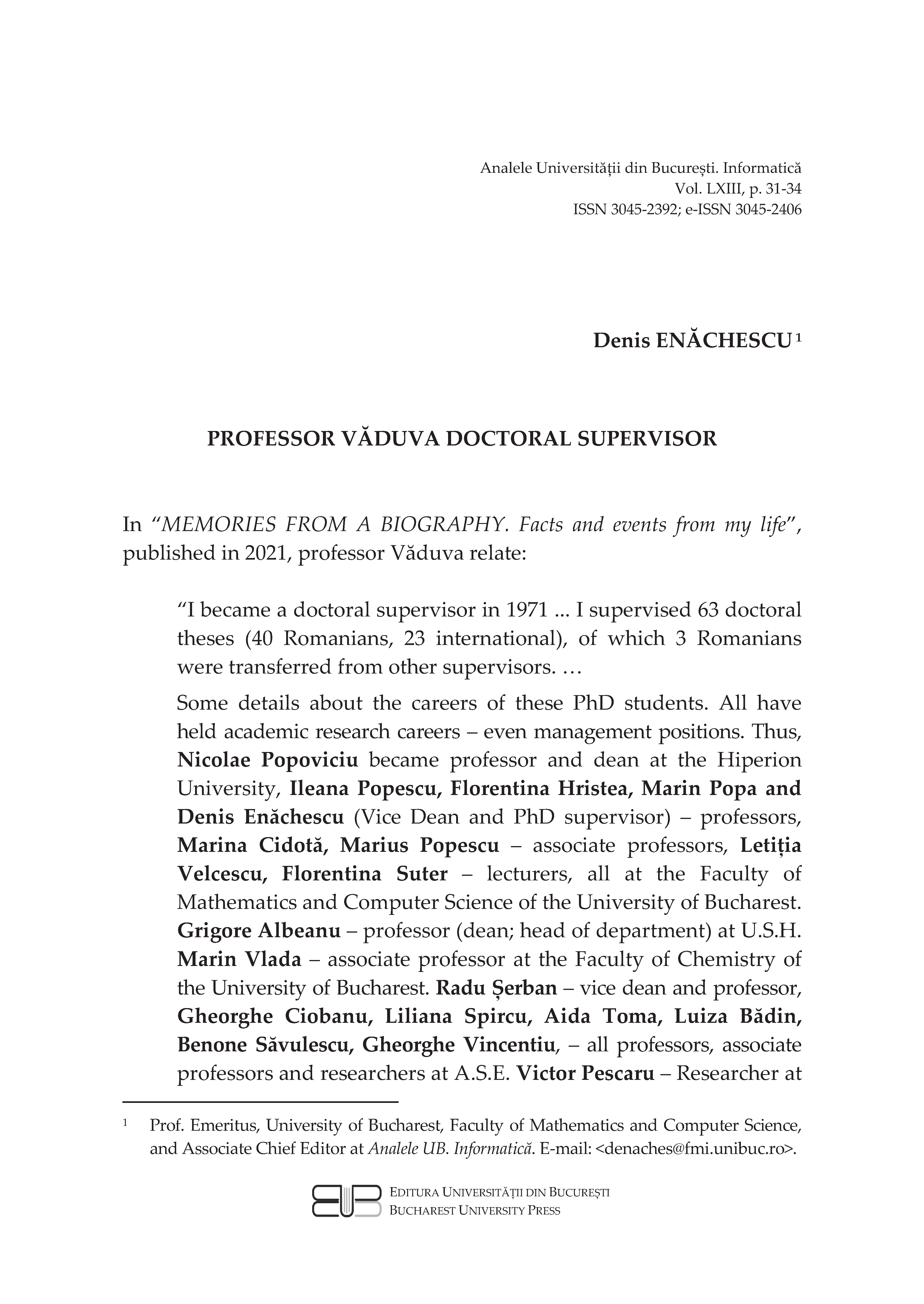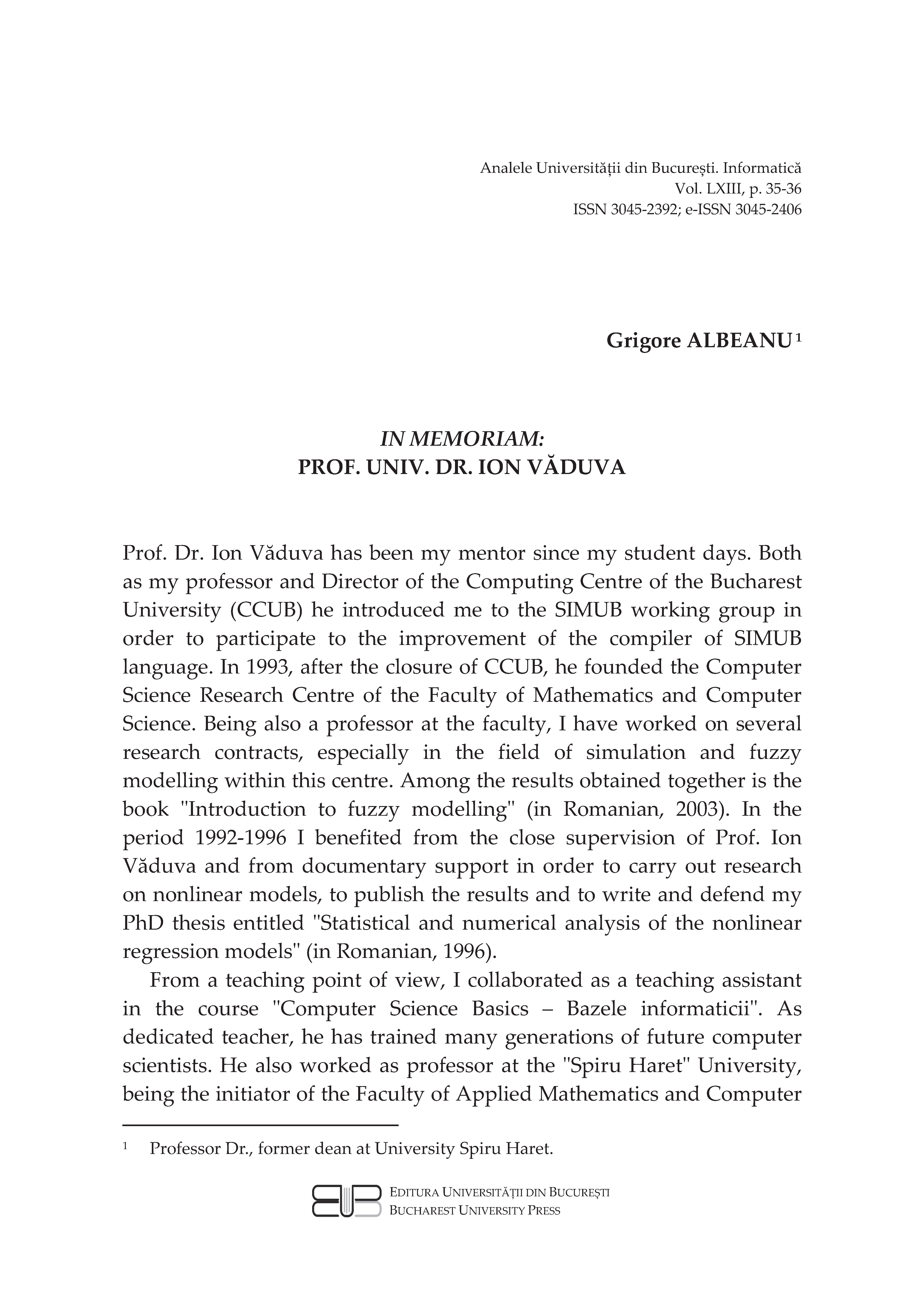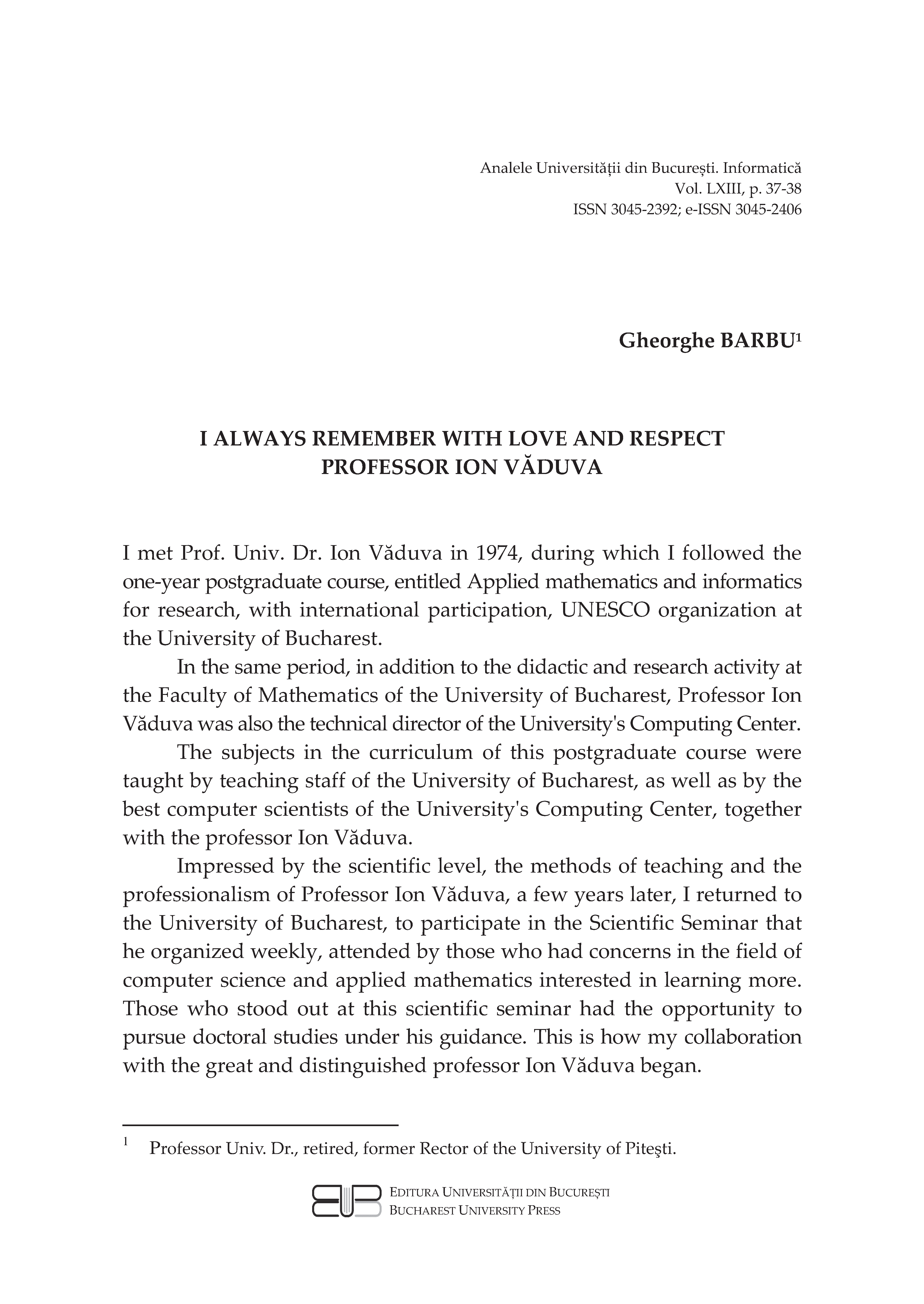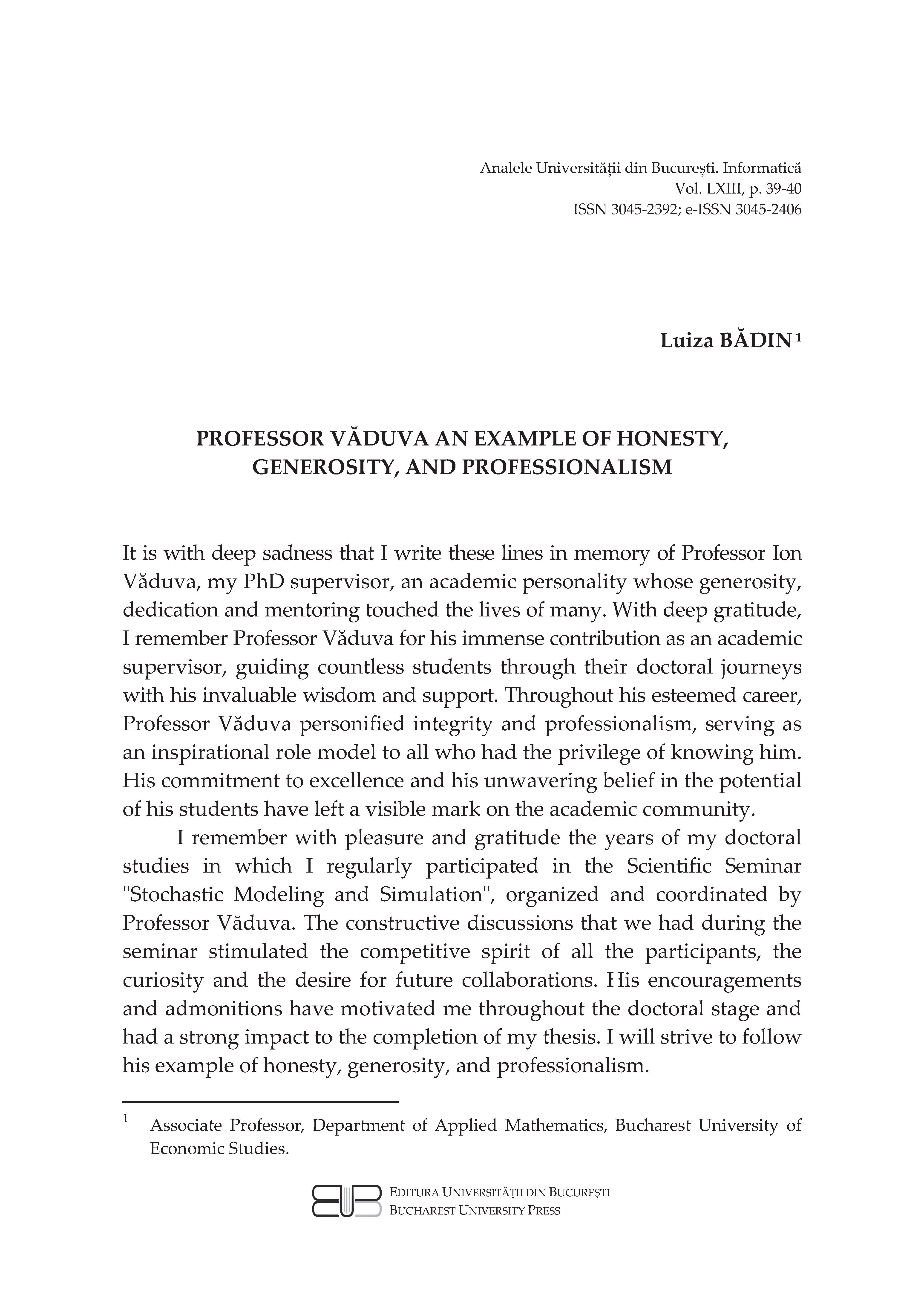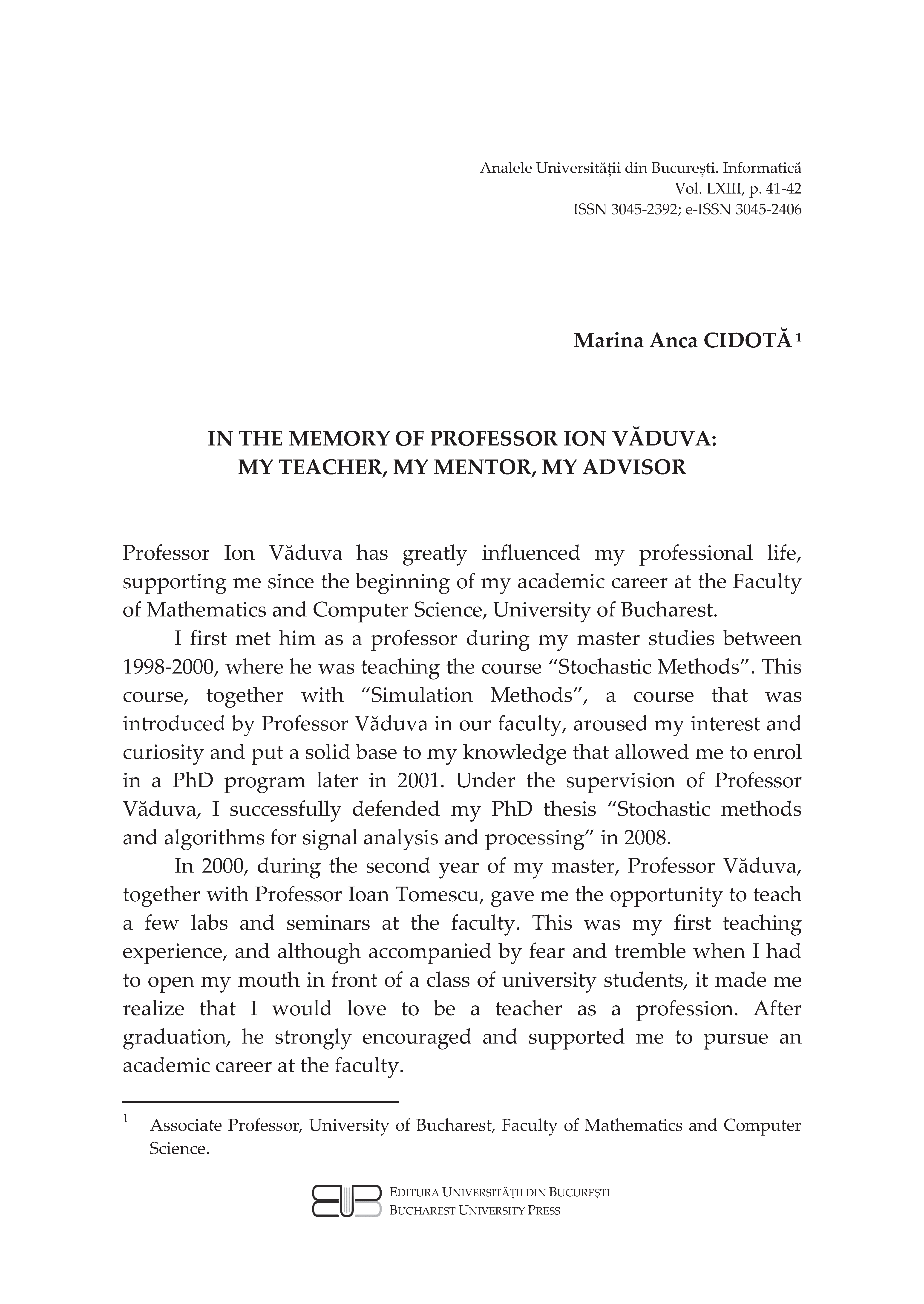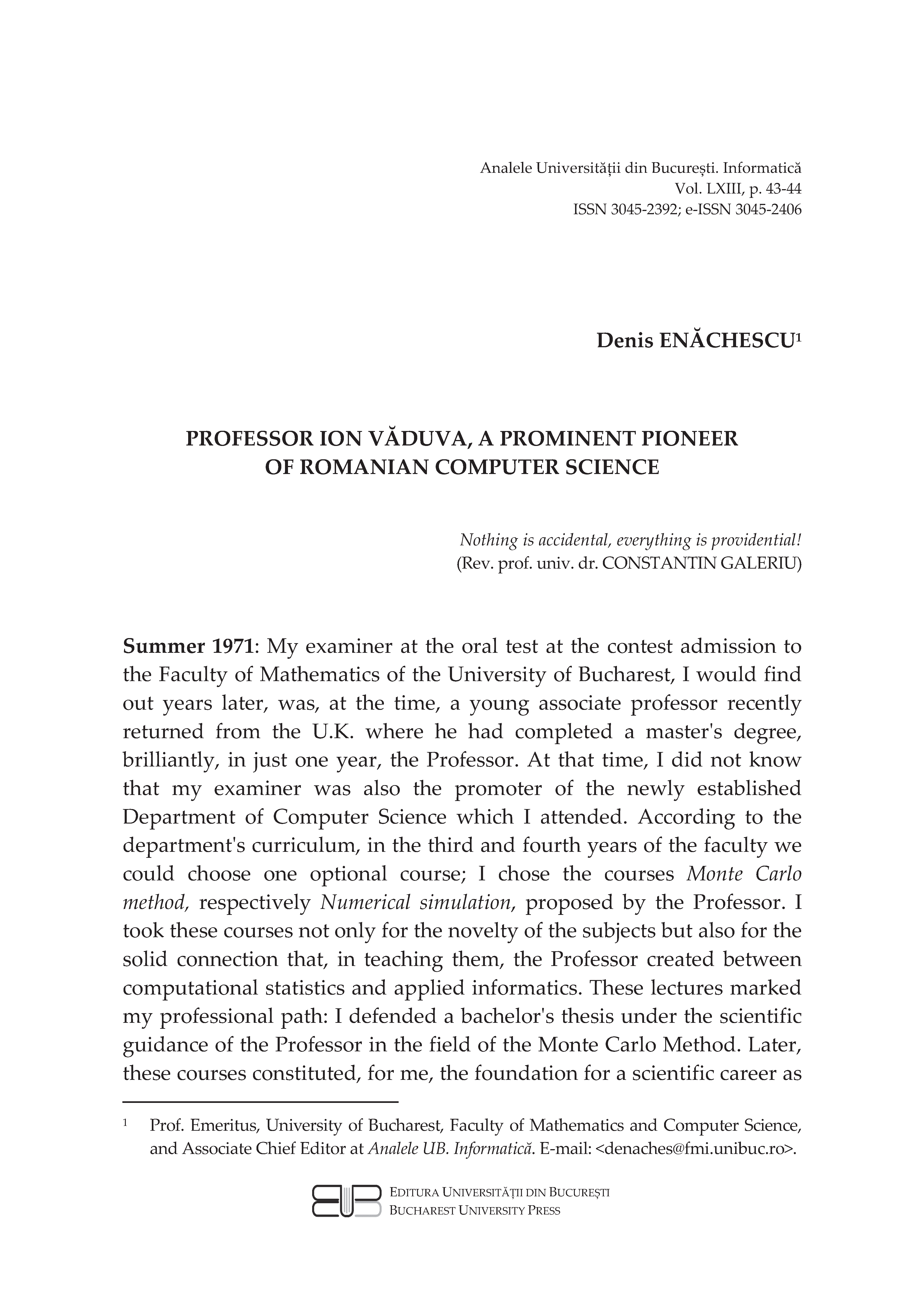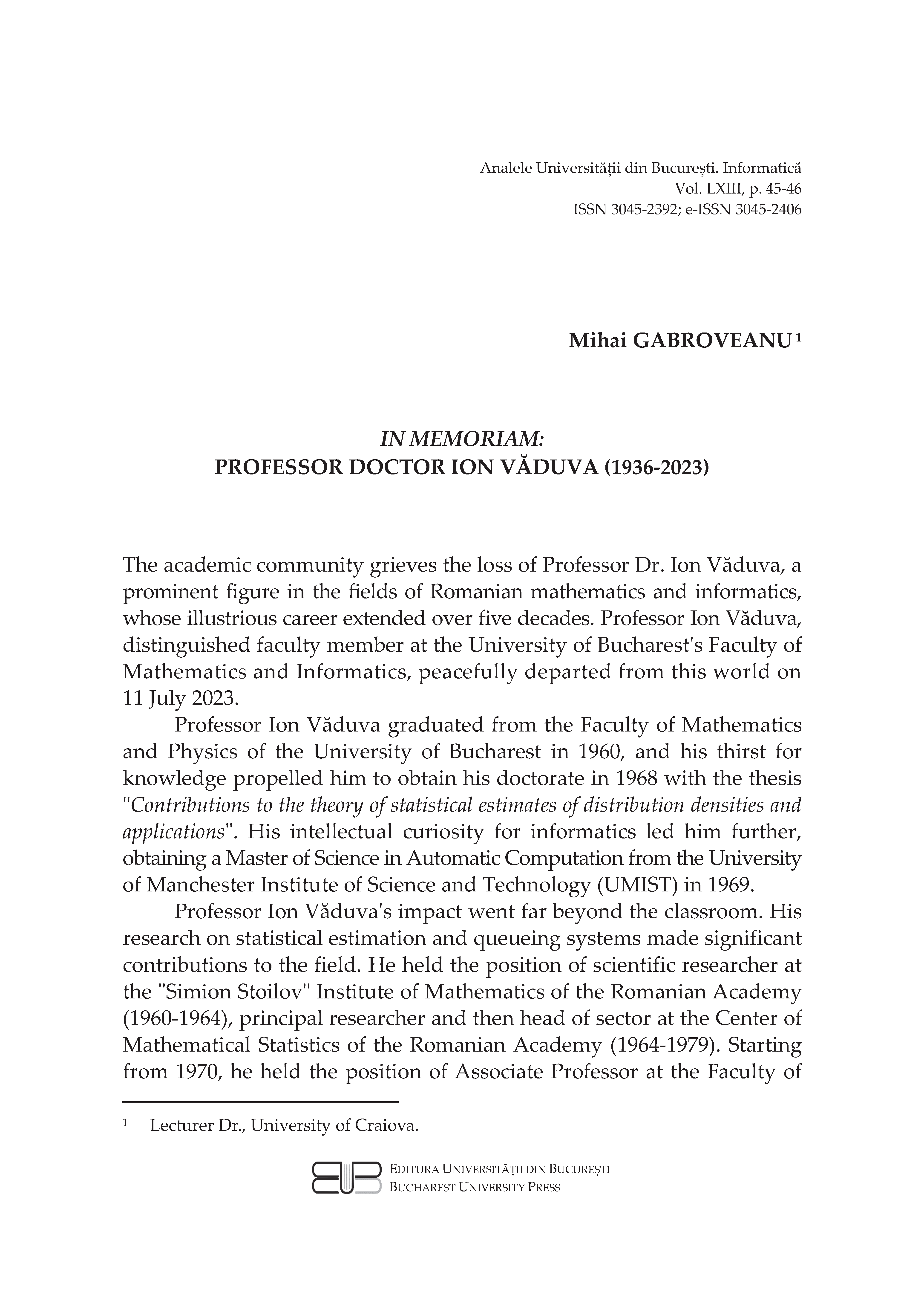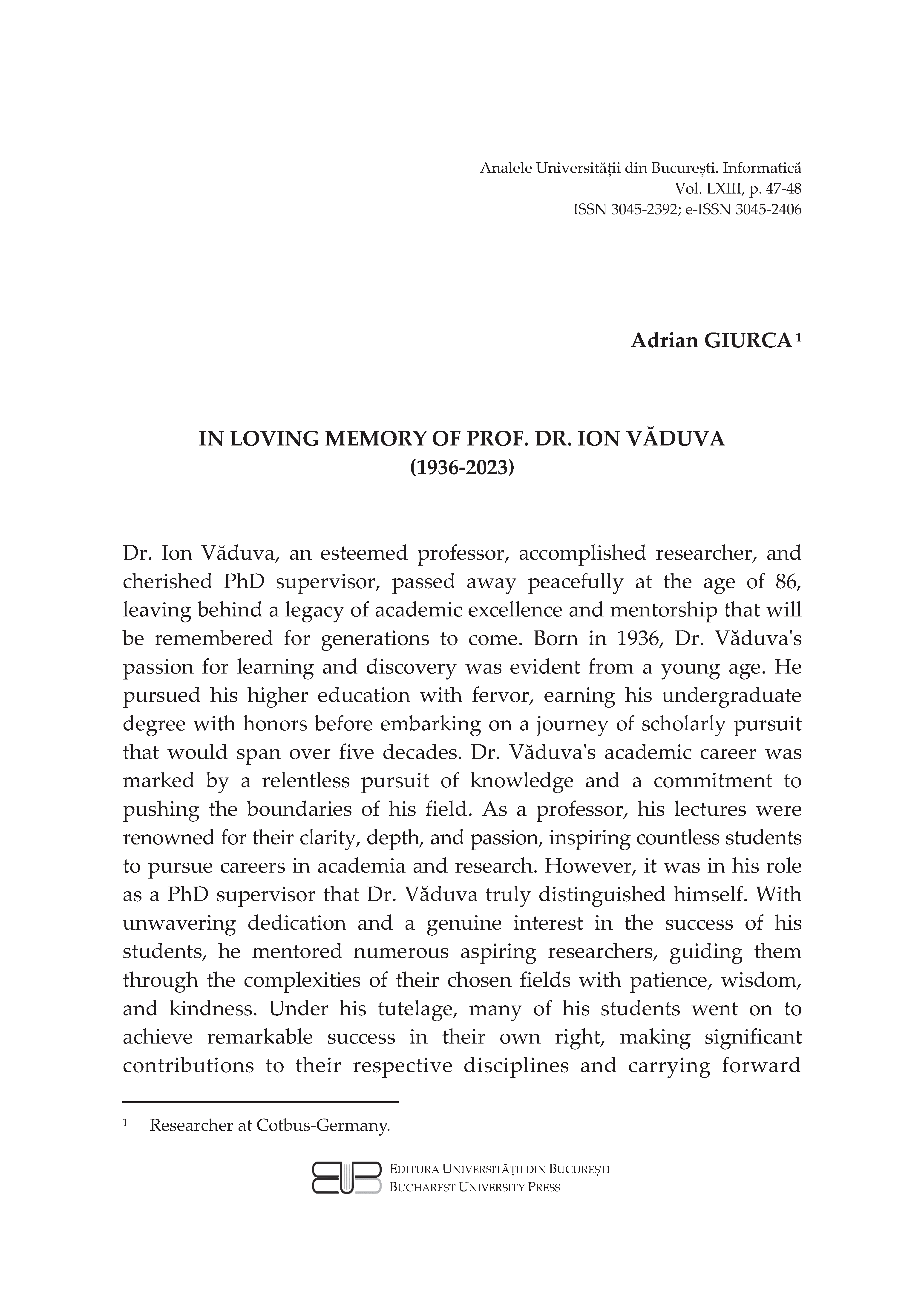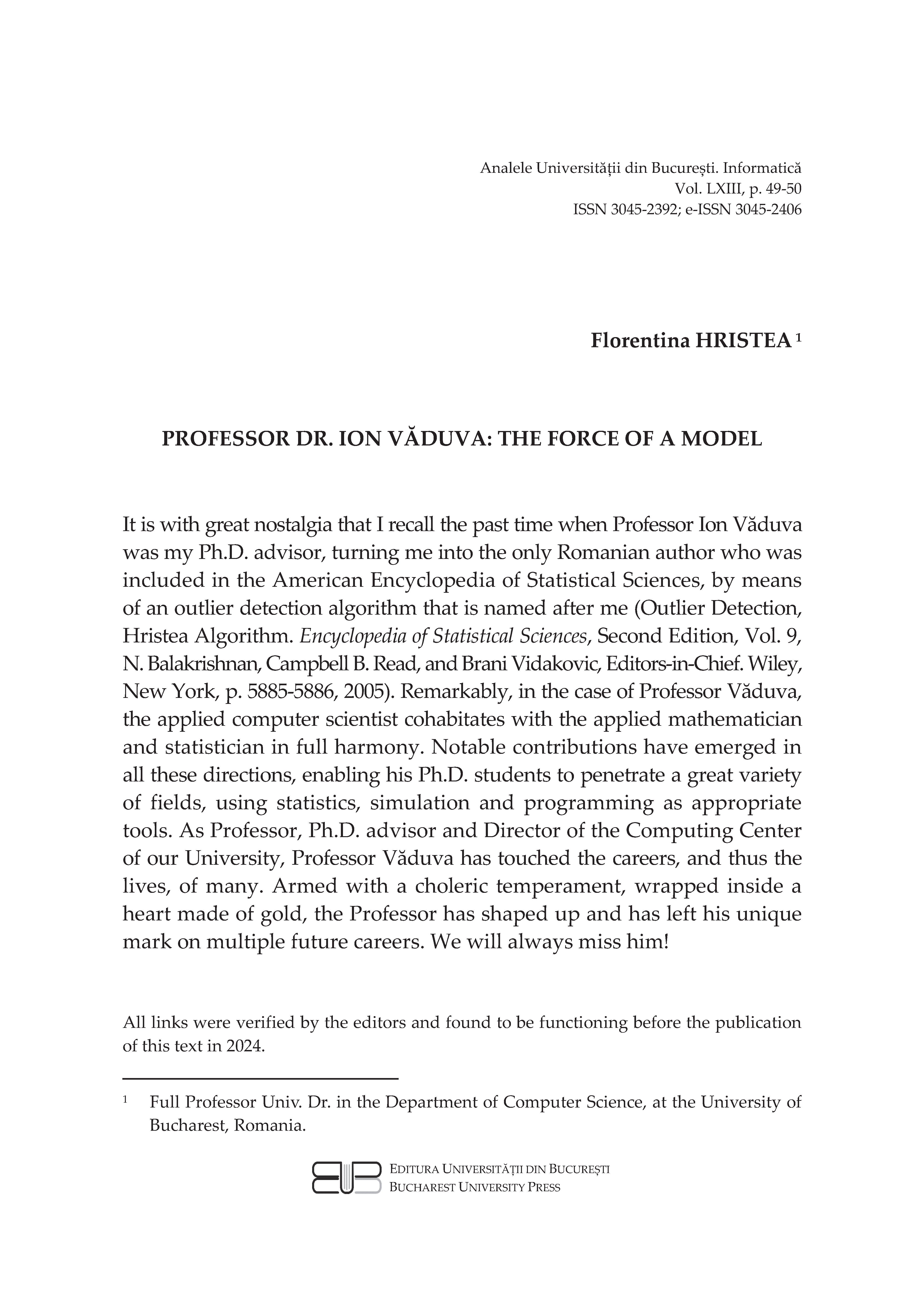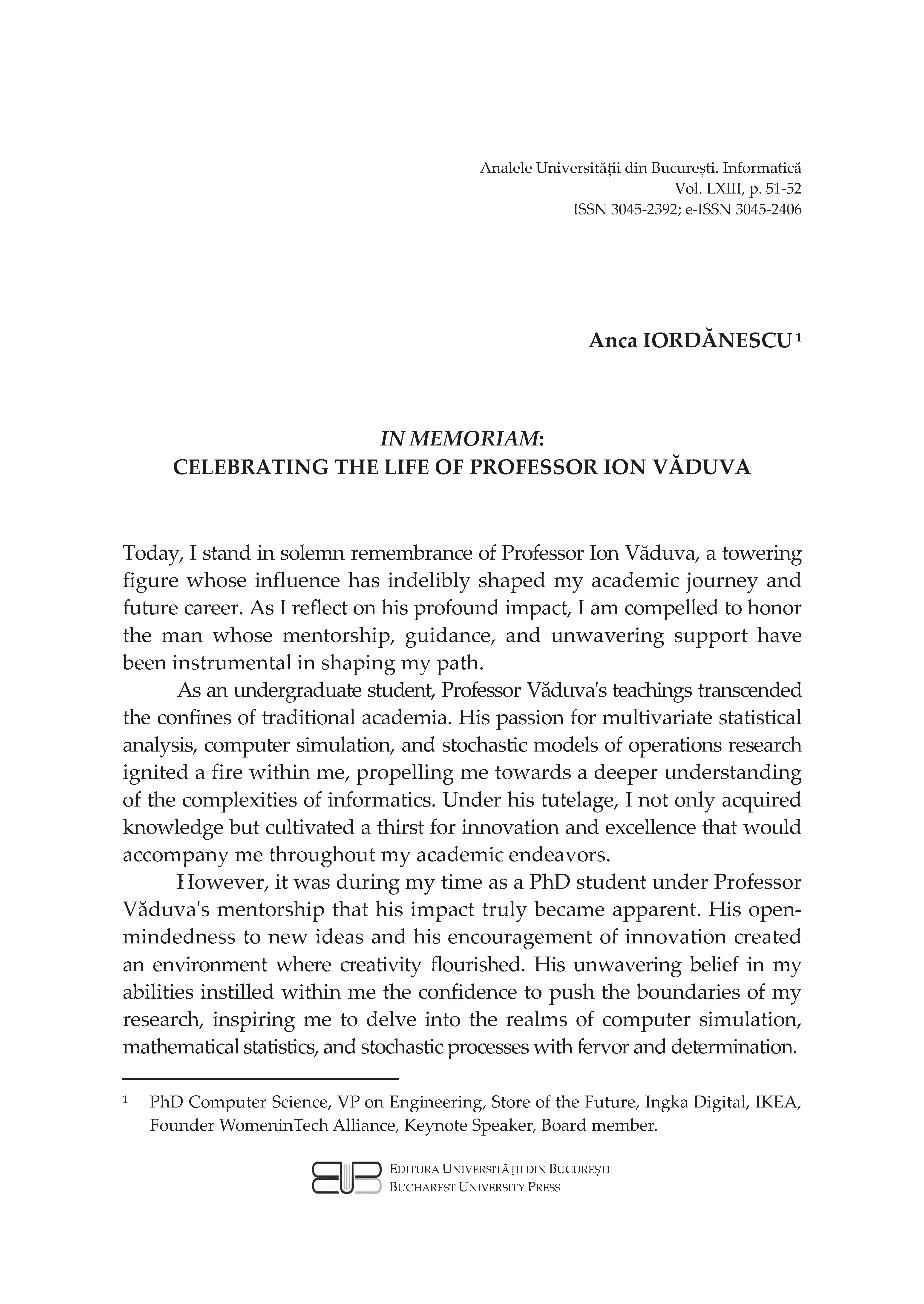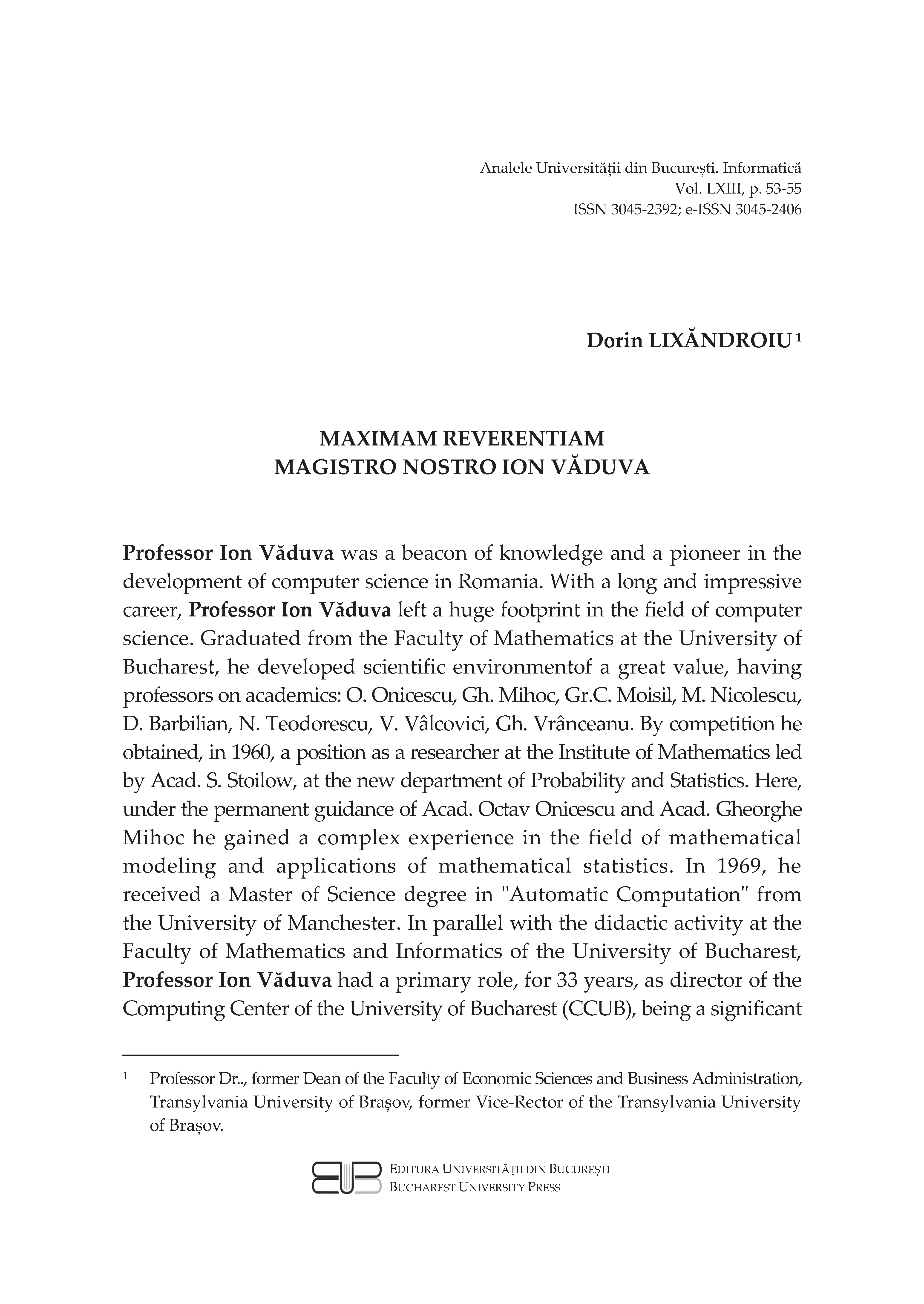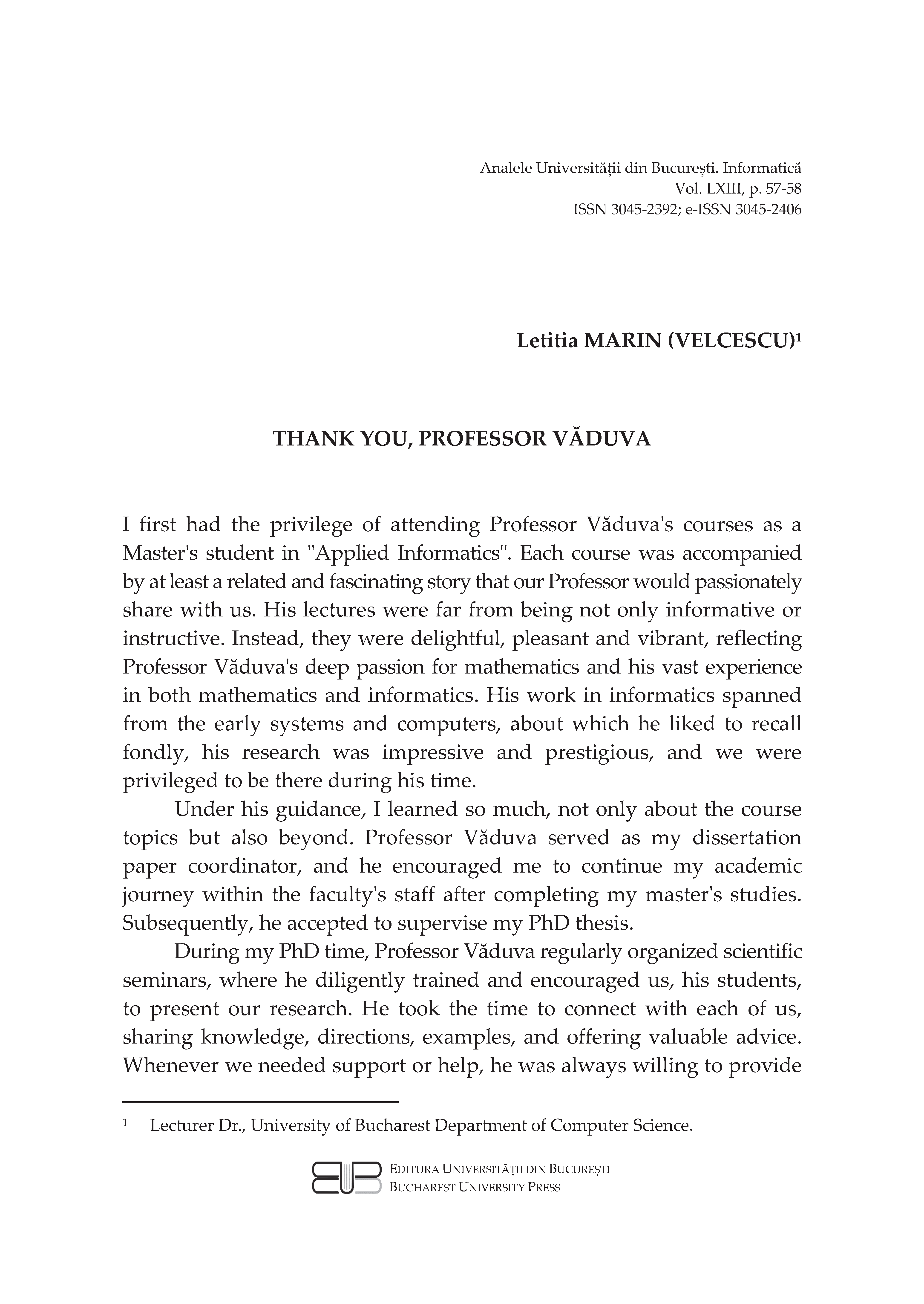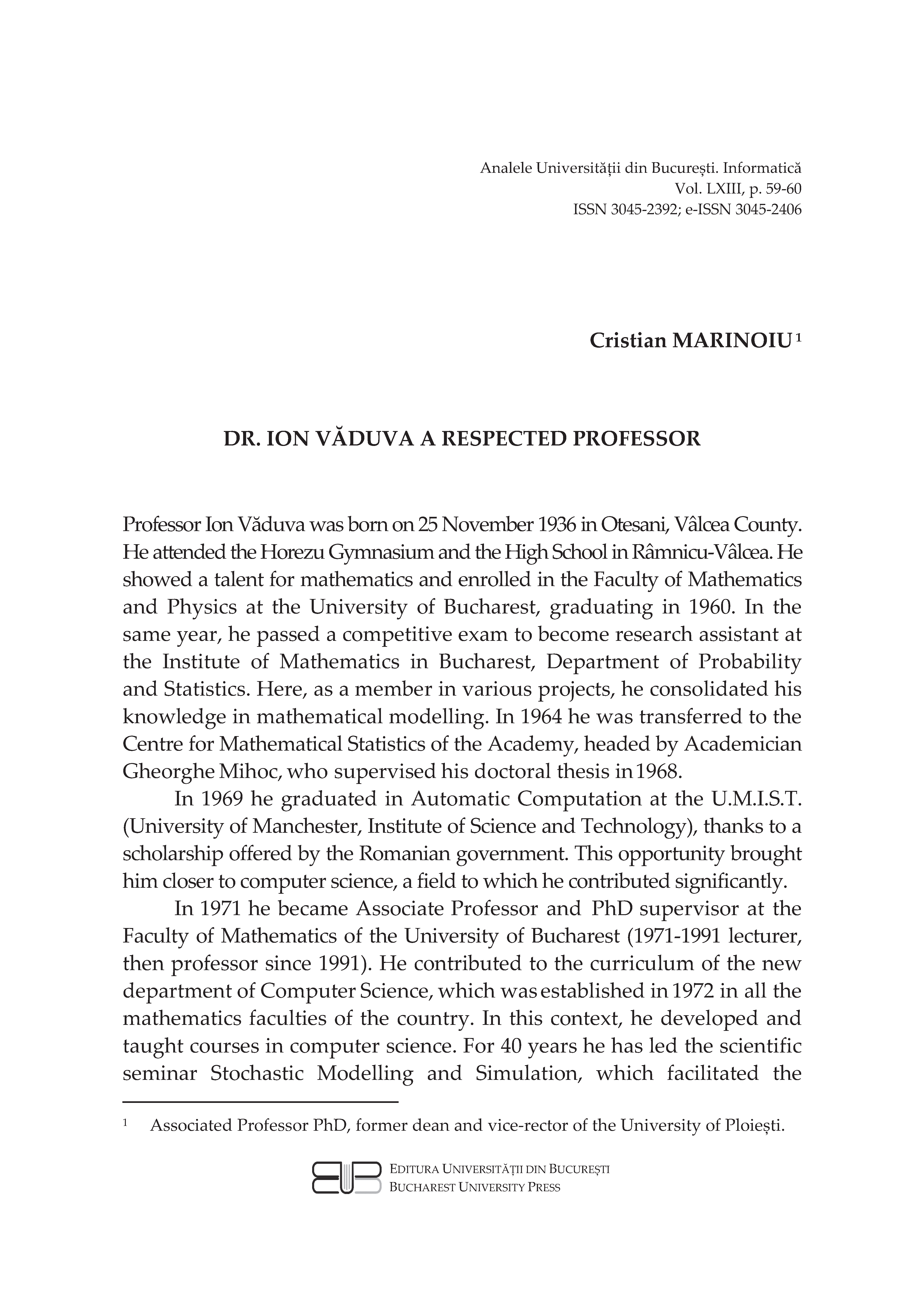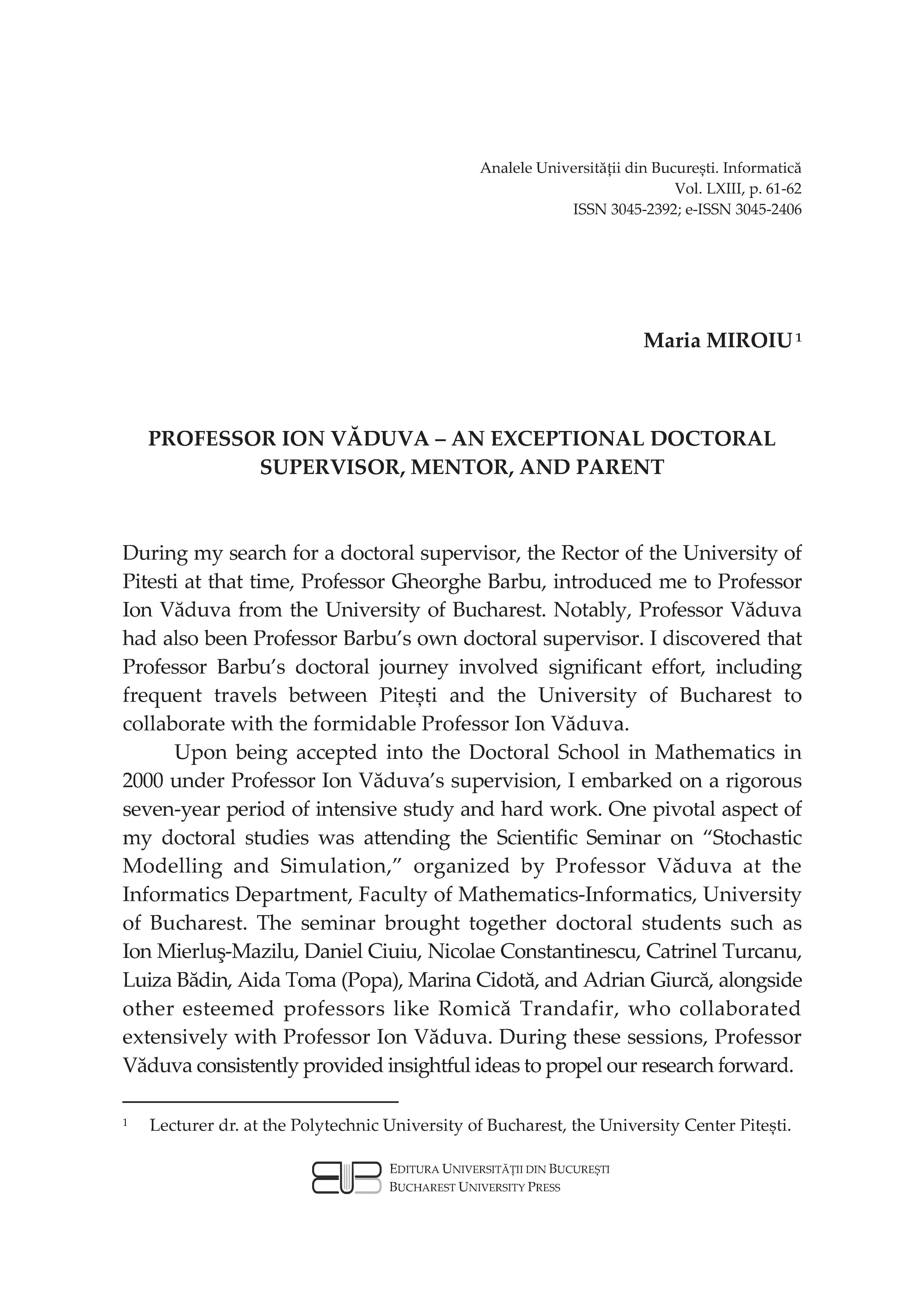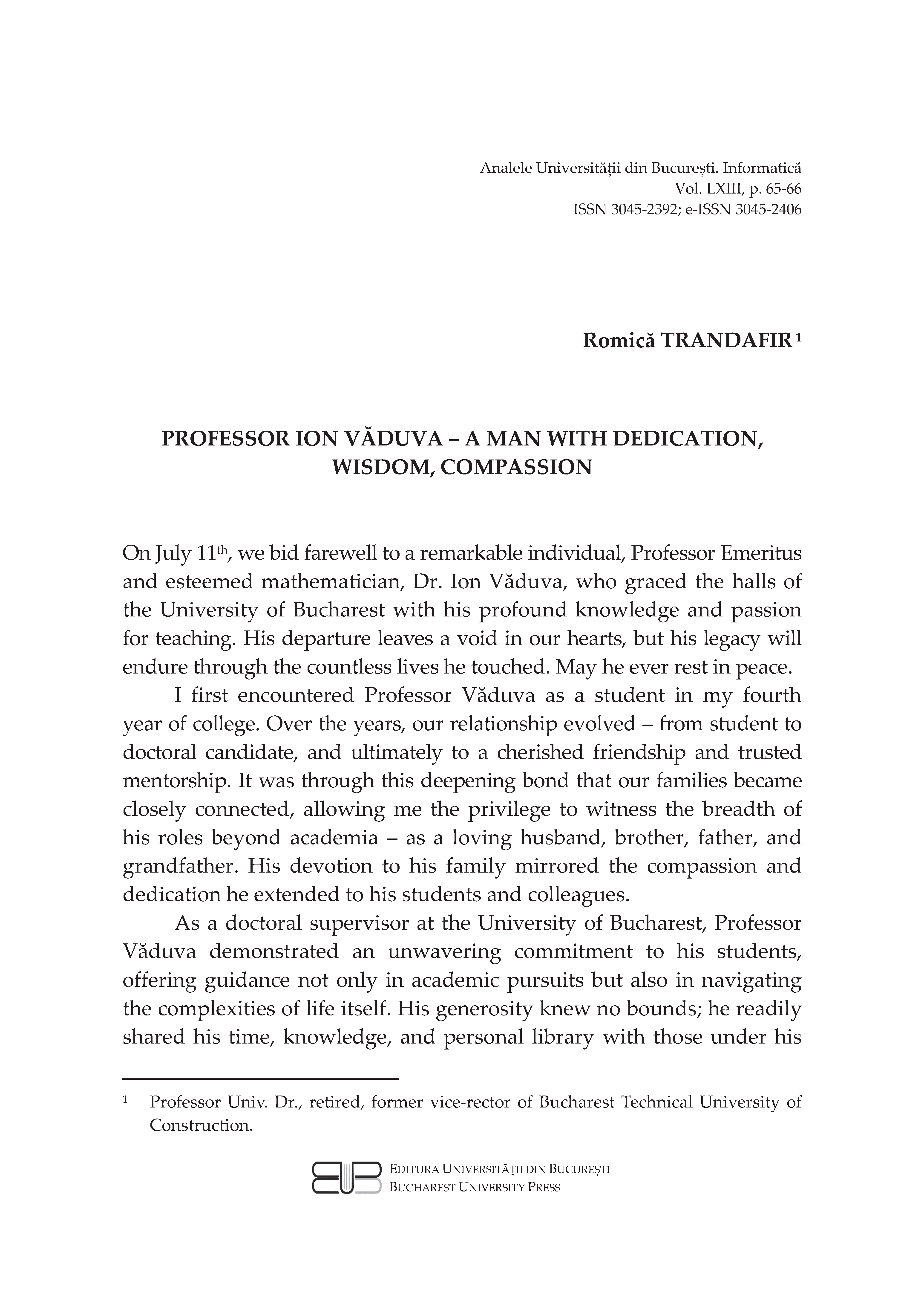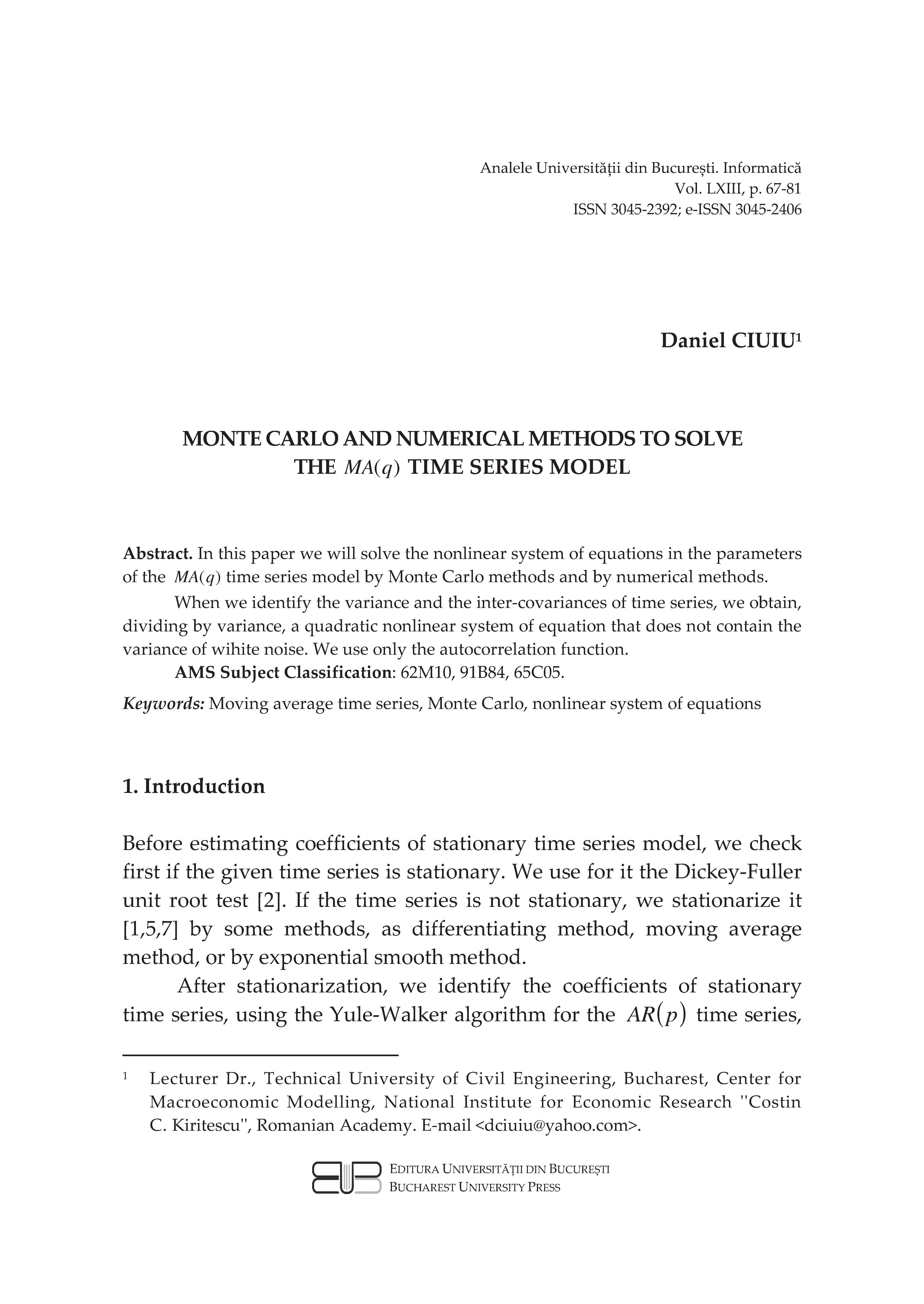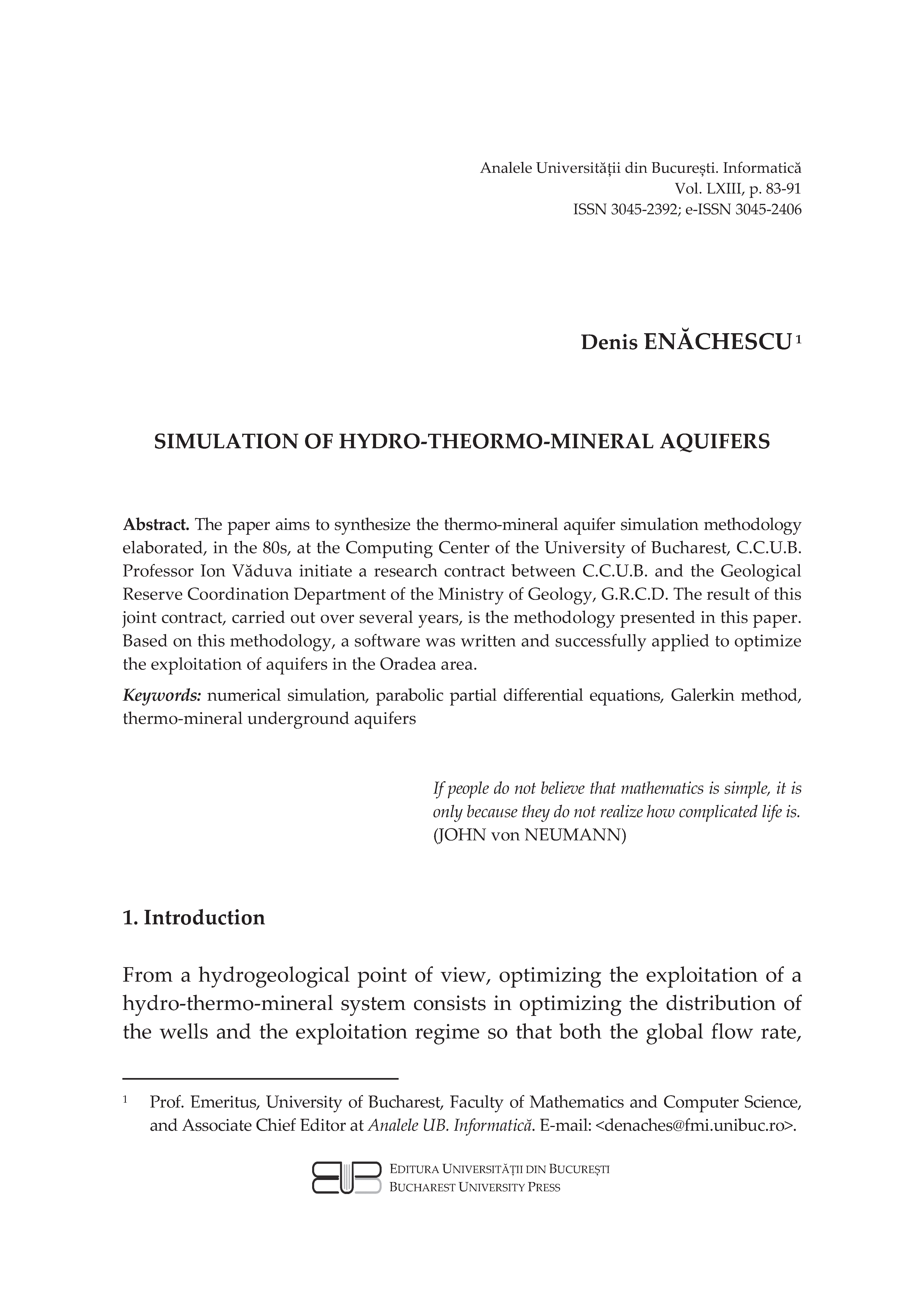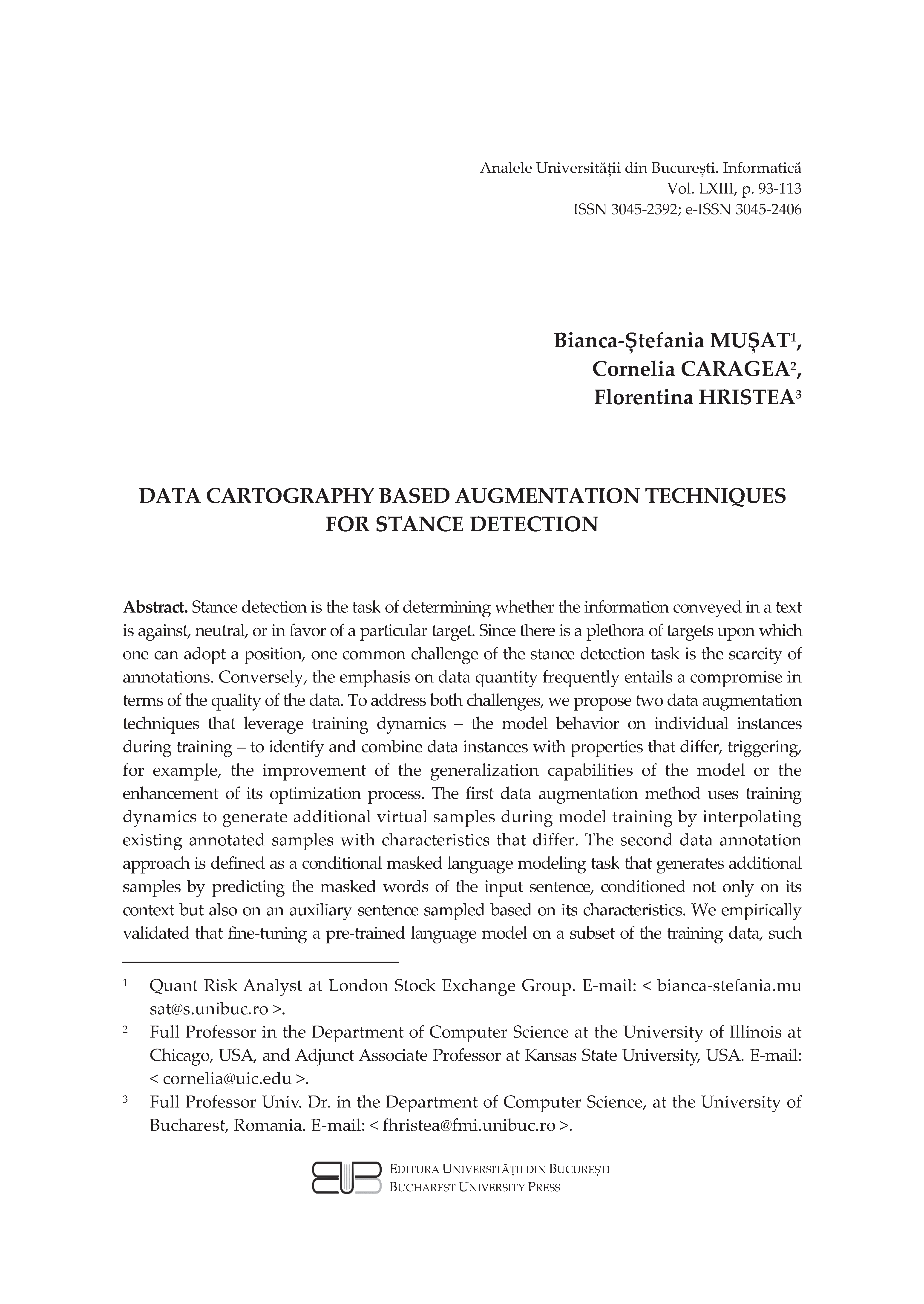Volum 63 Nr. 1 (2024): ANALELE UNIVERSITĂȚII BUCUREȘTI. INFORMATICĂ
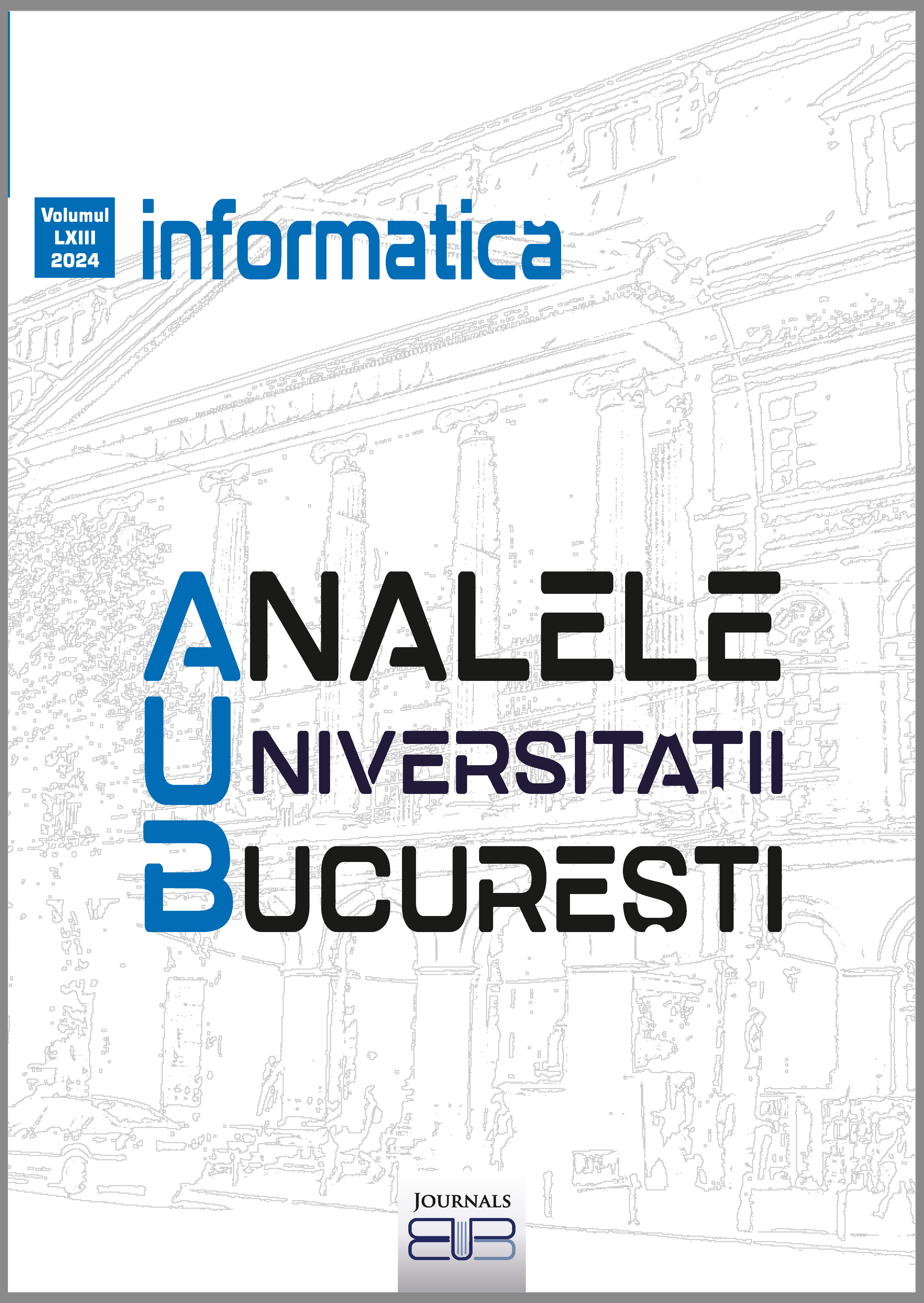
Revista este dedicată în primul rând lucrărilor în domeniul informaticii. De asemenea, publica o listă de probleme deschise, recenzii de cărți, monografii, lucrări și diverse. De mare interes sunt următoarele domenii: Inteligența artificială, Teoria automatelor, Complexitatea computațională, Simularea computerizată și Metodele Monte Carlo, Limbaje formale, Scheme de programe, Teoria limbajelor de programare, Funcții recursive. Sunt incluse și alte subiecte, cum ar fi Algebra Booleană, Combinatorică, Matematică constructivă, Teoria graficelor, Statistica computațională și Analiza numerică, în măsura în care sunt relevante pentru Informatică.
Număr complet
Laudatio
-
In Memory of Ion Vaduva
Rezumat
We will make a presentation of the life and activity of former University Professor Dr. Ion Văduva, from the Faculty of Mathematics and Computer Science of the University of Bucharest. I met the professor as supervisor of my doctoral thesis, as a participant in various scientific events (conferences, summer schools, etc.), as a collaborator in research contracts, and as an invitee to activities and events held at the University from Craiova. On November 17, 2017, our university awarded him the title of Doctor Honoris Causa. As the organizer of this event, I had long discussions regarding the biography and activity of the professor; additionally, he has provided me with materials in this regard. All this allowed me to prepare this article.
In Memoriam
Articles
-
MONTE CARLO AND NUMERICAL METHODS TO SOLVE THE TIME SERIES MODEL
Rezumat
In this paper we will solve the nonlinear system of equations in the parameters of the time series model by Monte Carlo methods and by numerical methods. When we identify the variance and the inter-covariances of time series, we obtain, dividing by variance, a quadratic nonlinear system of equation that does not contain the variance of wihite noise. We use only the autocorrelation function. AMS Subject Classification: 62M10, 91B84, 65C05.
-
SIMULATION OF HYDRO-THEORMO-MINERAL AQUIFERS
Rezumat
The paper aims to synthesize the thermo-mineral aquifer simulation methodology elaborated, in the 80s, at the Computing Center of the University of Bucharest, C.C.U.B. Professor Ion Văduva initiate a research contract between C.C.U.B. and the Geological Reserve Coordination Department of the Ministry of Geology, G.R.C.D. The result of this joint contract, carried out over several years, is the methodology presented in this paper. Based on this methodology, a software was written and successfully applied to optimize the exploitation of aquifers in the Oradea area.
-
DATA CARTOGRAPHY BASED AUGMENTATION TECHNIQUES FOR STANCE DETECTION
Rezumat
Stance detection is the task of determining whether the information conveyed in a text is against, neutral, or in favor of a particular target. Since there is a plethora of targets upon which one can adopt a position, one common challenge of the stance detection task is the scarcity of annotations. Conversely, the emphasis on data quantity frequently entails a compromise in terms of the quality of the data. To address both challenges, we propose two data augmentation techniques that leverage training dynamics – the model behavior on individual instances during training – to identify and combine data instances with properties that differ, triggering, for example, the improvement of the generalization capabilities of the model or the enhancement of its optimization process. The first data augmentation method uses training dynamics to generate additional virtual samples during model training by interpolating existing annotated samples with characteristics that differ. The second data annotation approach is defined as a conditional masked language modeling task that generates additional samples by predicting the masked words of the input sentence, conditioned not only on its context but also on an auxiliary sentence sampled based on its characteristics. We empirically validated that fine-tuning a pre-trained language model on a subset of the training data, such that the instances that harm the training process are excluded, achieves better performance as compared to the same model fine-tuned on the entire training dataset. Moreover, in most cases, the performance of the existing augmentation approaches was also improved by using data with properties that differ during the annotation process, as opposed to random sampling.

